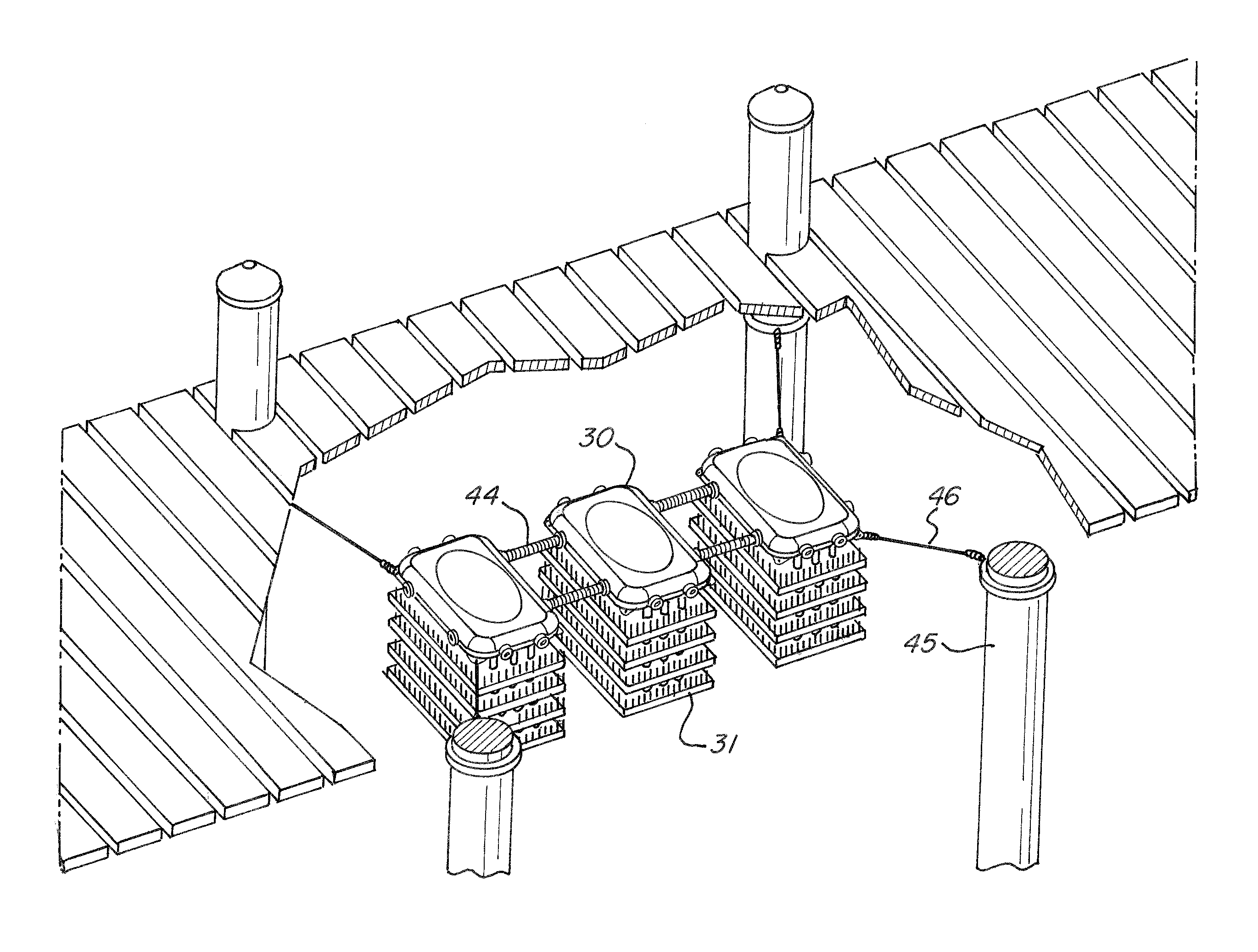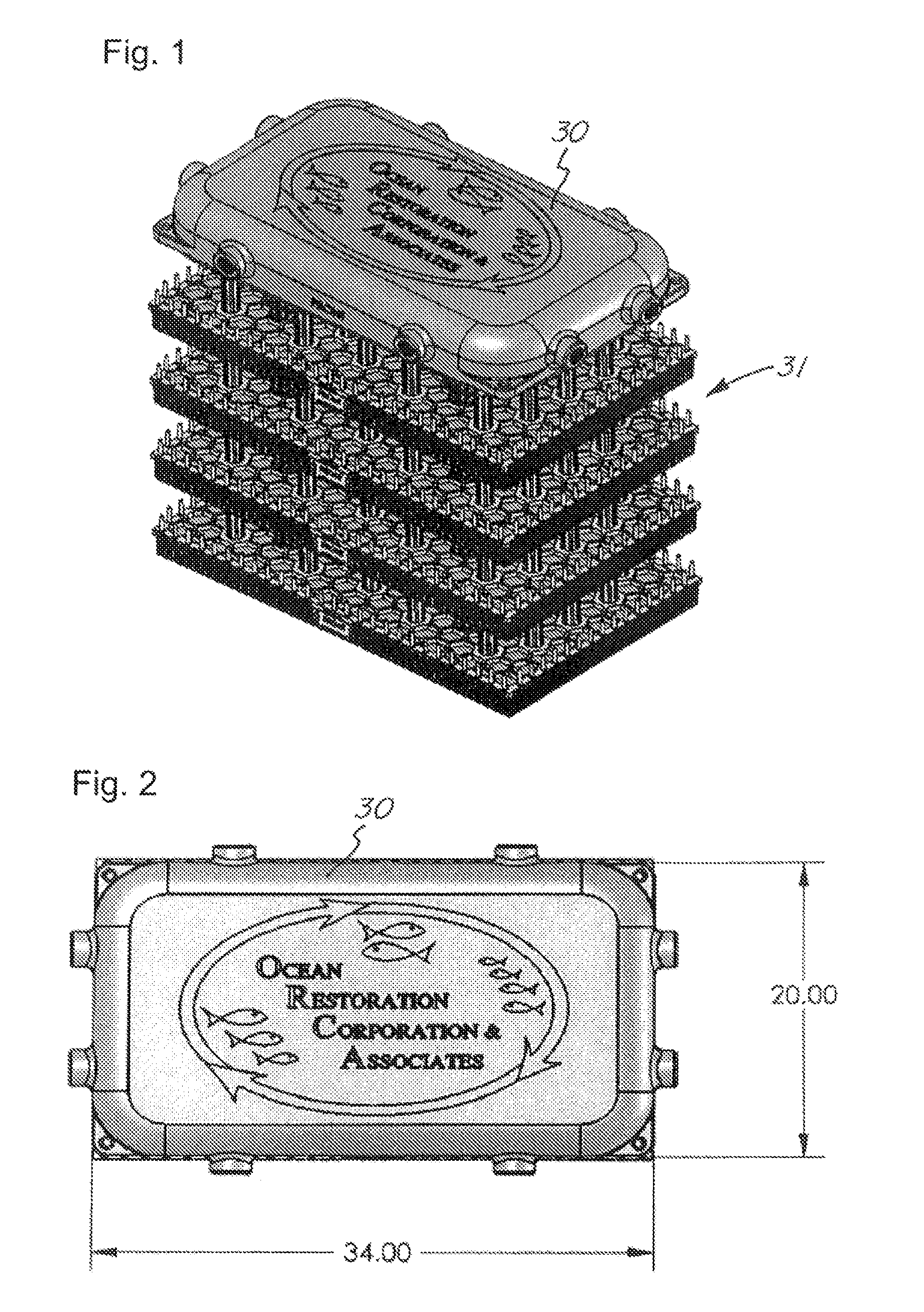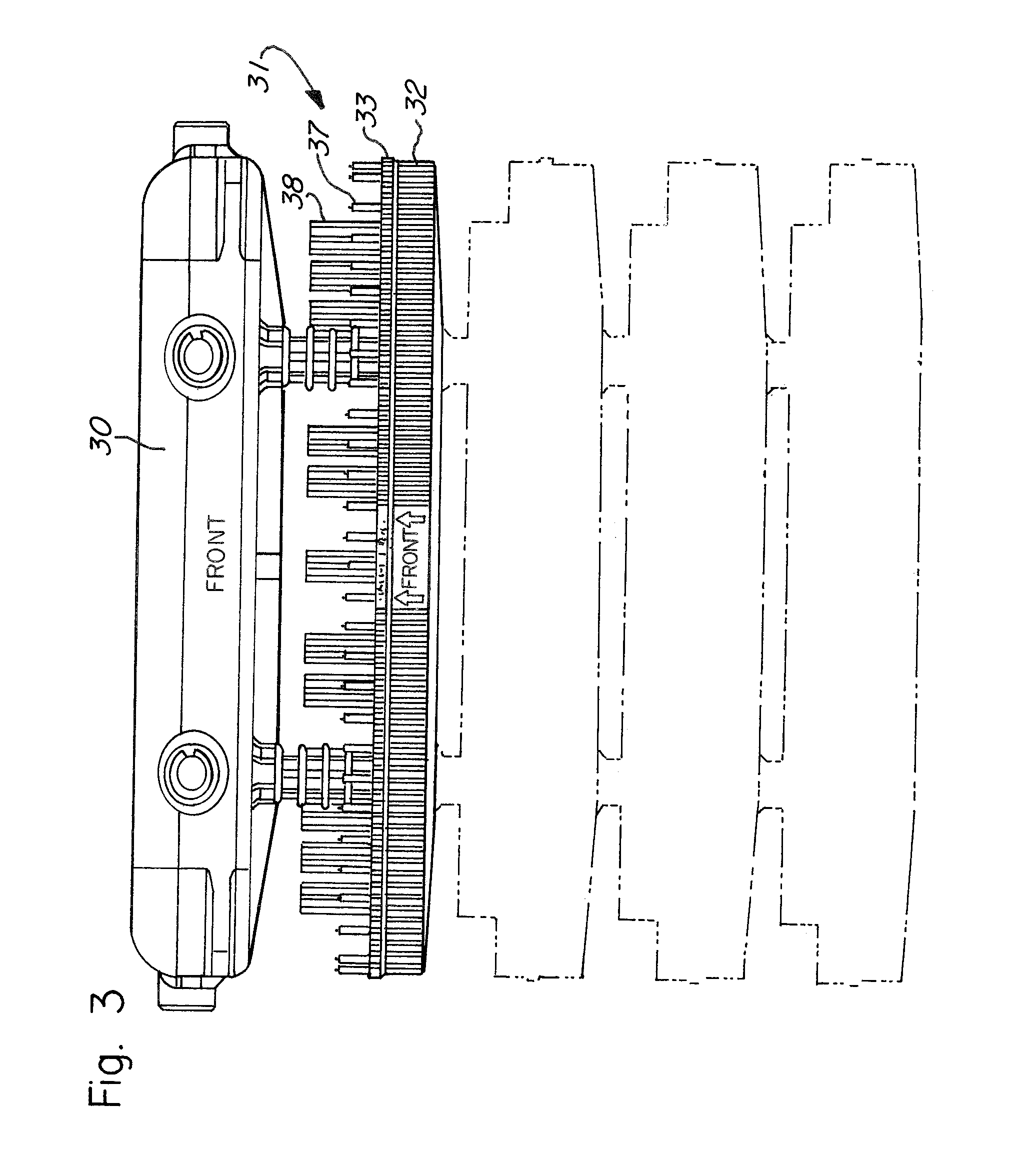Marine Habitat Systems
a technology for marine habitats and systems, applied in pisciculture, aquaria, climate change adaptation, etc., can solve the problems of inability to withstand the rigorous marine environment, ineffective functionally, complicated and expensive, etc., and achieve the effect of easy change ou
- Summary
- Abstract
- Description
- Claims
- Application Information
AI Technical Summary
Benefits of technology
Problems solved by technology
Method used
Image
Examples
Embodiment Construction
[0032]With references to the drawings, a typical and preferred form of the new habitat includes a hollow (typically blow molded) floatation unit 30 which provides sufficient buoyancy to support a plurality of habitat tiers 31. In the illustrated example there are four such tiers. The entire unit can be formed of a suitable plastic material, such as high density polyethylene (HDPE), which also can be recycled material.
[0033]The individual habitat tiers, shown in exploded view in FIG. 4, comprise a bottom section 32 having surrounding side walls 35, a cover section 33, and an intermediate layer 34 of a mesh matrix of plastic fibers. Preferably, the mesh material is a commercially available material known as EcoMesh, marketed by Americo, of Atlanta, Ga. and uniquely adapted to the purposes of this invention. The EcoMesh material is a stiff open mesh material, which may be two inches or so in thickness, and is received within the walls 35 of the bottom section of the tier assembly. The ...
PUM
 Login to View More
Login to View More Abstract
Description
Claims
Application Information
 Login to View More
Login to View More - R&D
- Intellectual Property
- Life Sciences
- Materials
- Tech Scout
- Unparalleled Data Quality
- Higher Quality Content
- 60% Fewer Hallucinations
Browse by: Latest US Patents, China's latest patents, Technical Efficacy Thesaurus, Application Domain, Technology Topic, Popular Technical Reports.
© 2025 PatSnap. All rights reserved.Legal|Privacy policy|Modern Slavery Act Transparency Statement|Sitemap|About US| Contact US: help@patsnap.com



